Today they are under 25 and entering the workforce. In other words, they will be a determining factor shortly.
Here we bring you strategies to reach this audience and what their values and needs are when buying.
Source: Freepik
Digital natives redesign the future
Gen Z, centennials, or zoomers were born between 1995-97 and 2012, approximately. They were called “digital natives” by Marc Prensky, an American writer, and lecturer specializing in education.
Why?
Because they are the first people born and raised in the age of the internet and digital ecosystems. All previous generations are “digital immigrants”, that is, they adopted technology in their lives at a late stage.
They are no longer children.
How many?
According to the consulting firm Euromonitor, it is the largest population cohort in the world, with 2.5 billion people.
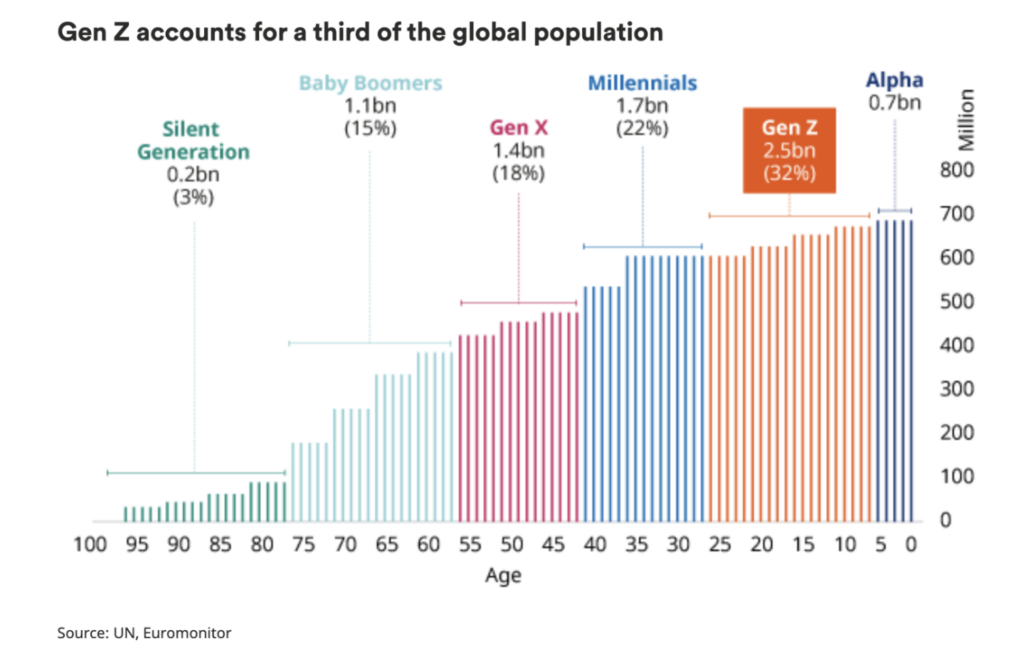
Yes, they are more than the Millennials.
If you want your business or brand to continue to grow, you have to analyze this audience because they are very different from other generations, including millennials.
Your digital behaviors, preferences, and practices
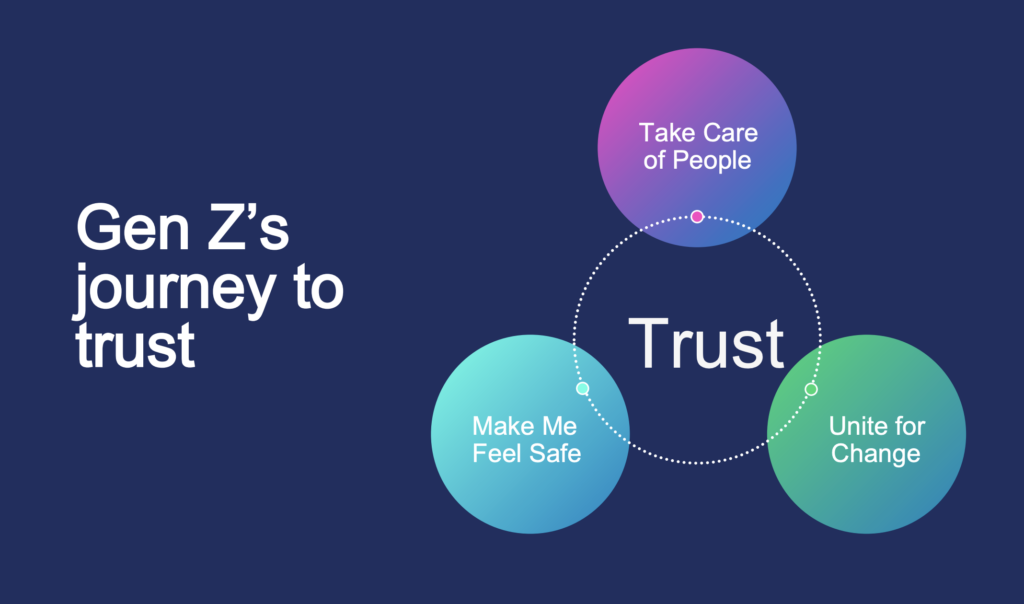
Source: Edelmann
It is an unconventional and highly diverse demographic. To reach them with relevant messages, it is necessary to know their values and behaviors.
They are very different from previous generations and have an omnichannel mindset that challenges brands.
This list of 9 insights helps to outline them and know where to start.
📲 They are “Mobile fist”
75% use mobile phones more often than desktop computers and other devices (Institute of Business Management).
66% report that they use more than one Internet-connected device at a time. (Institute of Business Management) and consumption is based on vertical content and video.
😂 Memes: a form of communication
It is a generation that reads less and is very visual. This type of language, based on humor, suits them much better than any text.
❌ They don't like ads
Especially the traditional way of these.
🗝️ They value authenticity
They don't go to Instagram to brag. On the contrary, they appear natural. They want to be who they are and prefer instantaneity over curated and planned content.
💡 They look for natural and ethical content
When it comes to consuming content, they are more interested in those that reflect social and cultural movements.
🌐 Believe in online communities
Because these originate from shared interests and causes and not from educational or economic levels.
💆 They are very interested in mental health and well-being
Especially after the pandemic, topics like anxiety and depression resonate with this audience. TikTok is awash with professionals talking about mental health.
🎮 The importance of gaming
94% play video games, although they do not consider themselves gamers. (Google). Playing online is a lifestyle, not a hobby. Esports is an important part of the time they spend online.
📺 They consume television along with a second screen
95% use another device while watching TV. (GWI) What are the uses of the second screen? Especially social networks.
TikTok is a platform where you can find many people who comment on the news of the day as if their account were a newscast.
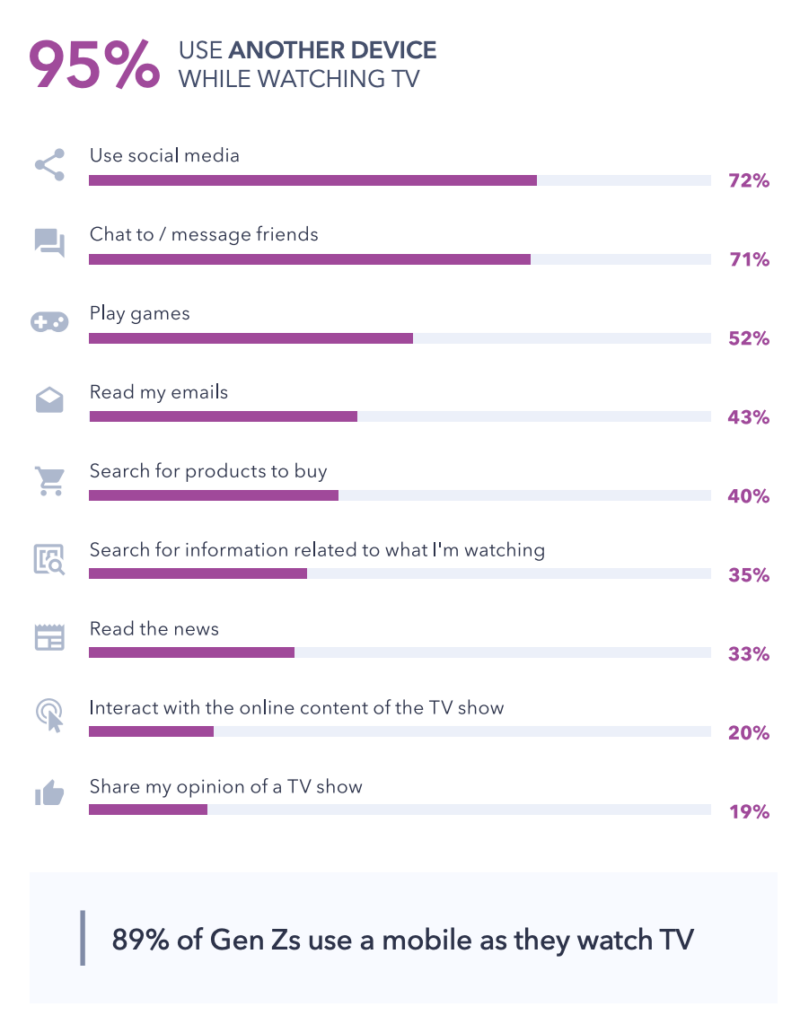
Source: GWI
7 buying habits of this generation
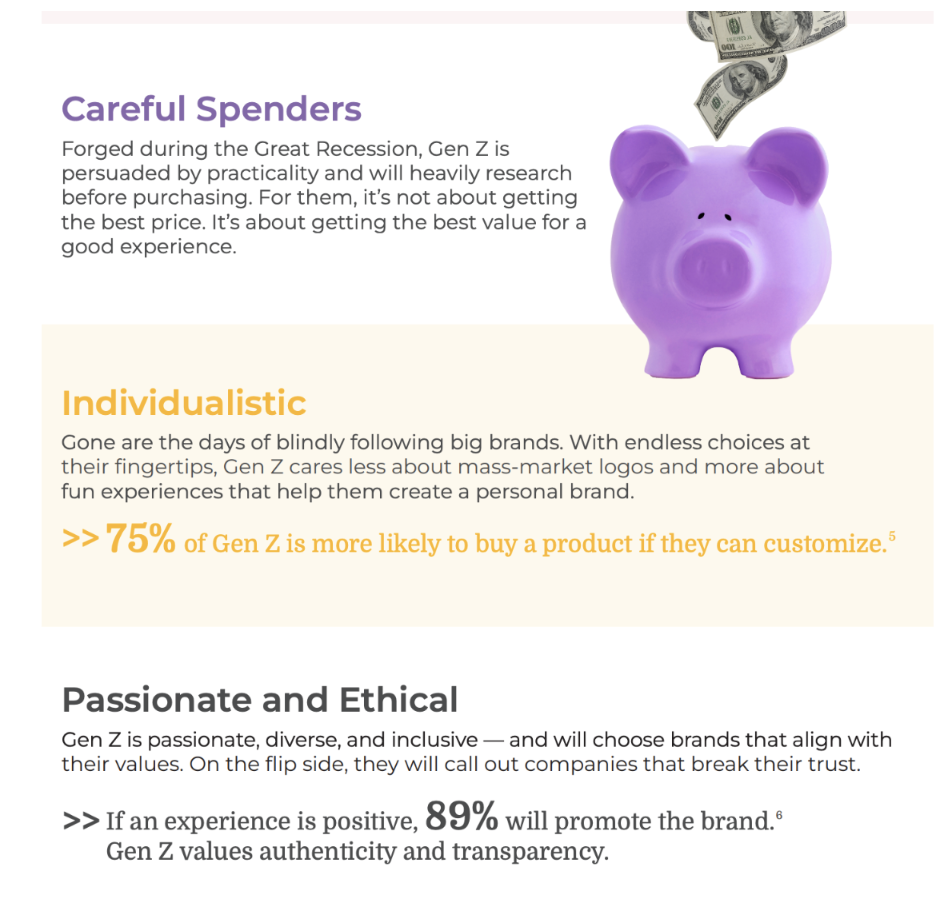
Source: Pivotree
👀 They are not brand loyal
Rather they are elusive and it is difficult to retain them. They don't want to see the products or what the brands do, they want to be part of it and be actively involved.
🌳 They prefer business models based on sustainability, equality, and acceptance
They have no hesitation in jumping toward a competitor if they find the values with which they are aligned there. And they are very demanding with issues such as recycling and caring for the environment.
🔒 Protect your privacy
61% say they would feel better sharing personal information with brands if they could trust it to be securely stored and protected.
👥 User reviews are important to your purchase decision
According to Sprout Social, 82% of Gen Z shoppers search social media for other people's opinions before making a purchase.
52% trust social media influencers for product or brand recommendations. (McKinsey & Company)
More than 70% say it influences family purchasing decisions on furniture, housewares, and food and beverages (IBM Institute for Business Value).
🧲 They want to be heard by brands
Significantly, new or existing products and services are adapted to your feedback. And make it visible. Businesses that don't communicate it well will be at a disadvantage.
💰 They value small businesses and do not look so much at brands
In 2021, 46% bought more from these types of businesses than before the pandemic. Most were driven by the ability to build a strong bond between consumers and contribute to the local economy (Sending Blue / CITE Research).
👥 They value personalized experiences
58% say they are willing to pay more for personalized products (McKinsey & Company).
What social networks are they on?
Although they were indeed early adopters of TikTok in the last 3 years, this generation grew up with Instagram, YouTube, and Snapchat.
But the most surprising thing is that their use of Facebook continues to be very high, although it declines as the years go by.
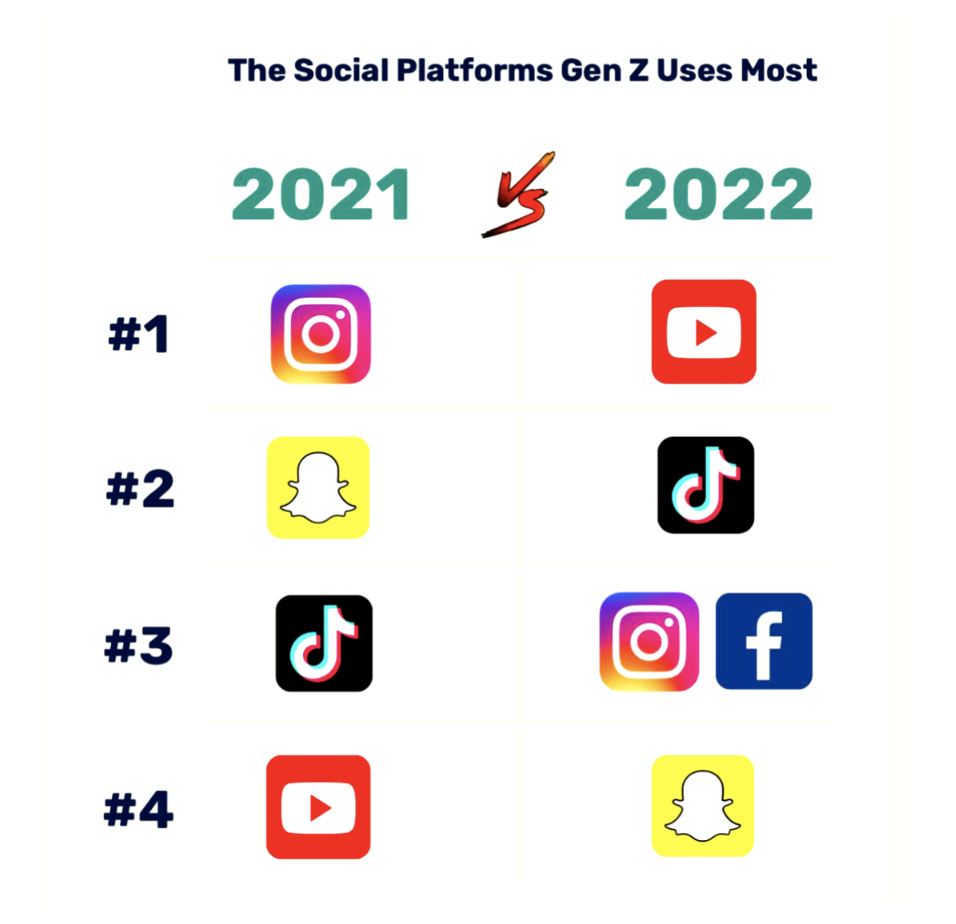
Source: Knit
YouTube is the social network they go to daily, although they also have a high consumption of TikTok and Instagram.
The preference for YouTube is given by its great interest in streaming channels and video content.
Differences between Millennials and Gen Z
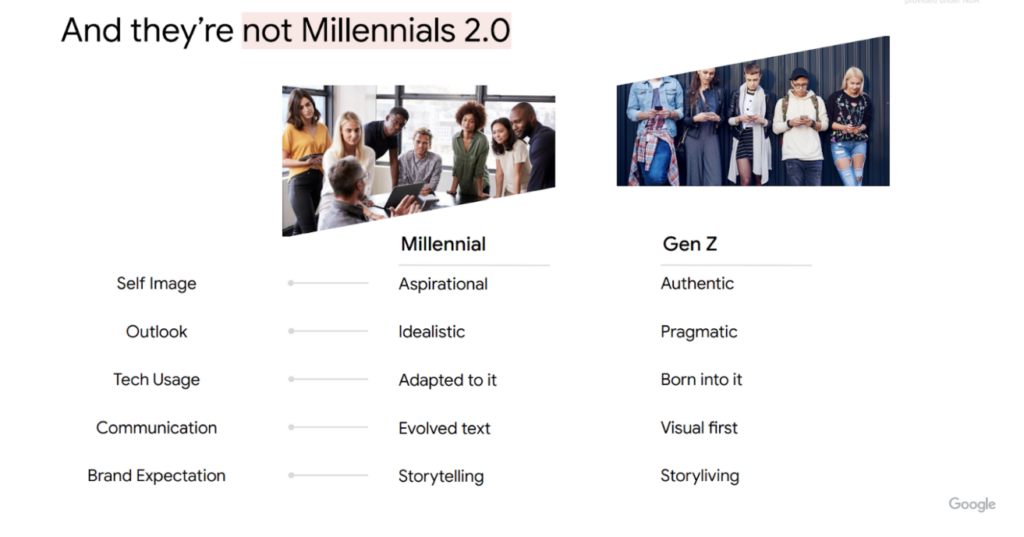
Source: Think With Google
For businesses it is important to know the difference between Millennials and Z:
Generation Z is not characterized by compulsive spending.
They tend to wait to buy and prefer to save more. But they are interested in spending if there is a social cause behind it.
The areas that interest them the most
Millennials and other generations today prioritize travel, experiences, household items, and furniture.
Generation Z has a different perspective on spending:
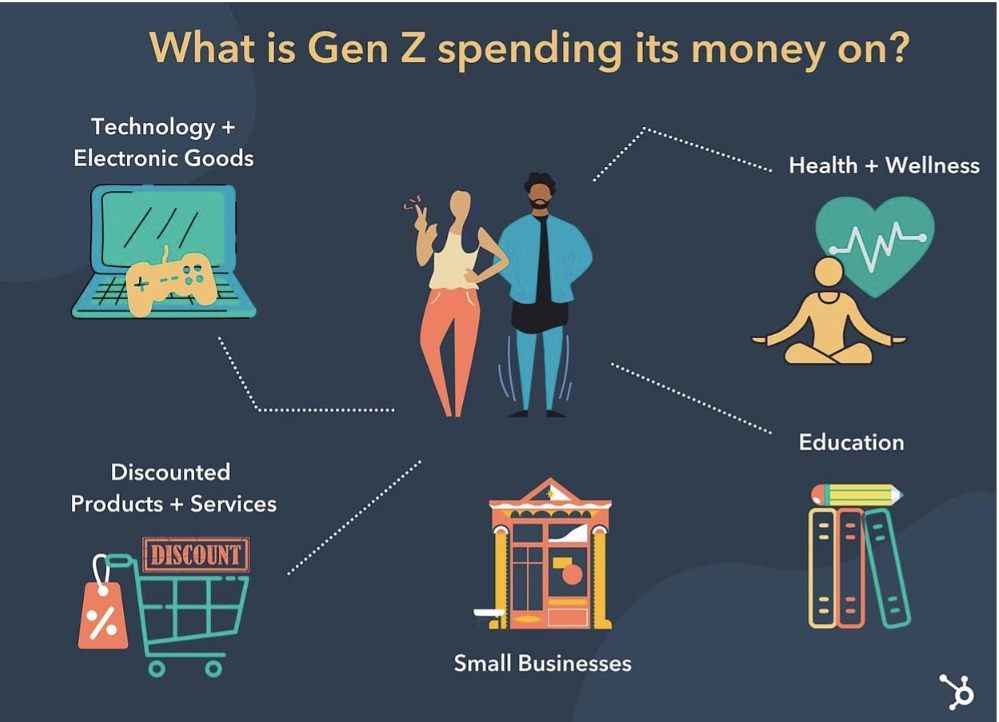
Source: Hubspot
minimalism vs. maximalism: the new form of retail
Gen Z is not minimalist like its millennial predecessors.
On the contrary, for them, the packaging is the starting point to getting to know a brand.
How can you get their attention? With these 3 ideas:
- Products with personality and attitude. Let them tell a story that includes them.
- Very creative designs with high contrast colors.
- Playful content.
Surely, as they grow up, they will adopt new practices while the others stabilize and define them as a generation.
But it is important to always keep in mind the extraordinary value they place on AUTHENTICITY.
Gen Z: our strategies to reach this audience
After this analysis, you probably already have many ideas about how to approach this audience.
But if you don't know how to talk to them, here are our strategies:
- Look for nano and micro-influencers that can help you reach this audience on social networks.
- Use User Generated Content (UGC), which is the content made by users with your products, services, or talking about your brand. Make them a part of it. They love interactive content.
- Produce vertical and video content to reach them. It is necessary to adapt the messages to video marketing designed for mobile devices because that is where they are most of the time.
- Advertisements that do not look like advertisements. Gen Z values the authentic and natural and that is what is happening with ads on TikTok. Check the Ads Library of the platform to adapt your messages to that format.
- Worry about the user experience (CX) and add value. We are in a "customer-centric" era and Centennials do not value products or services in themselves.
Tell them very clearly how your products or services benefit them and fit their values. And make a personalized and omnichannel customer service.
- Have a presence on TikTok. We know that it is difficult to approach a strategy, but this platform already has more than 1 billion users and 40% are Centennials.
It is not the future. It is the present and its growth has been unstoppable for 2 years.
- No to greenwashing: take care of people and do true actions. Greenwashing is a phenomenon that goes against the ideals of centennials.
These are bad “green” marketing practices in companies that proclaim, for example: caring for the environment, manufacturing sustainable products, and not testing on animals.
This can't just be a sales pitch. It is necessary to commit and demonstrate it with actions.
The fashion industry has a huge environmental impact and bad green marketing practices are the order of the day.
An example is H&M. According to the Changing Markets Foundation 2021 report, 96% of brand claims don't hold up.
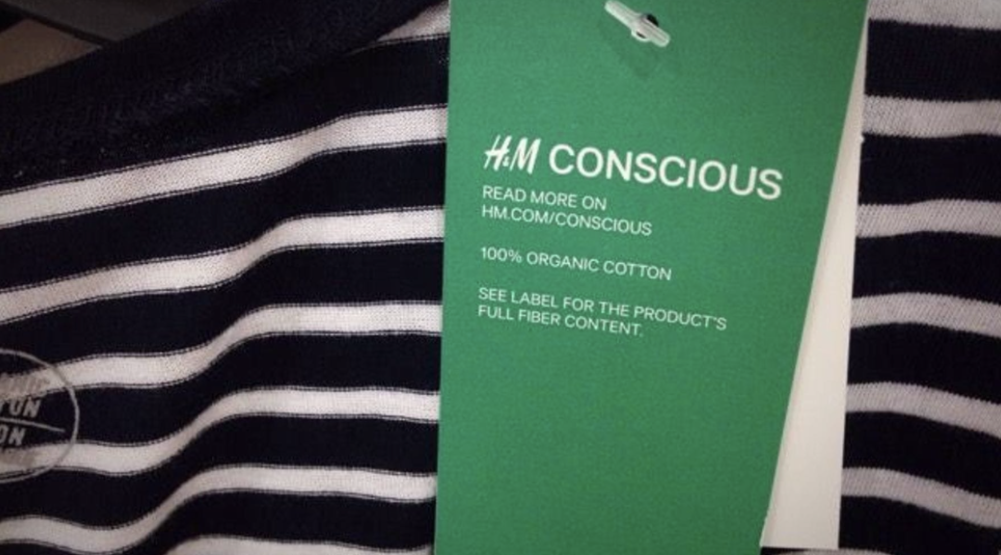
Remember: Gen Z will stop following and buying from brands that don't tell them the truth.
Any social or environmental action that your company announces has to be real and demonstrable.

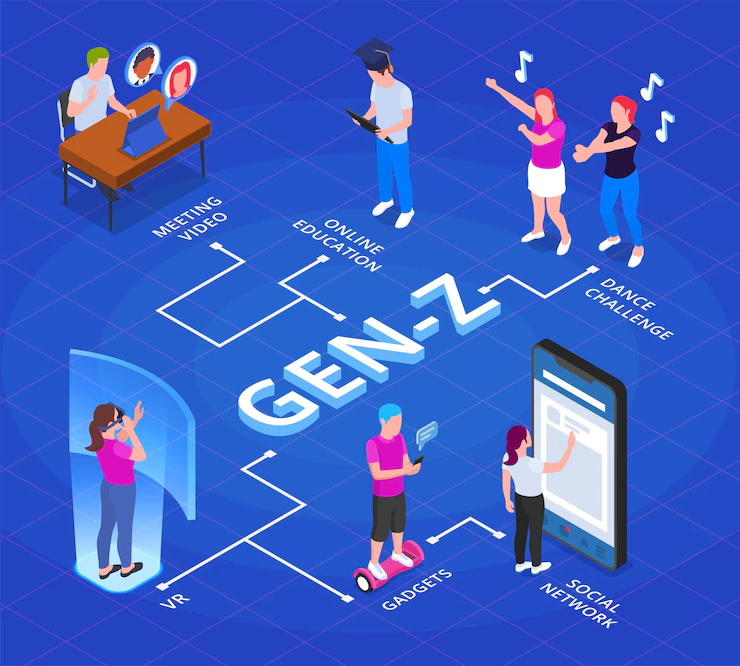

Comments
Post a Comment